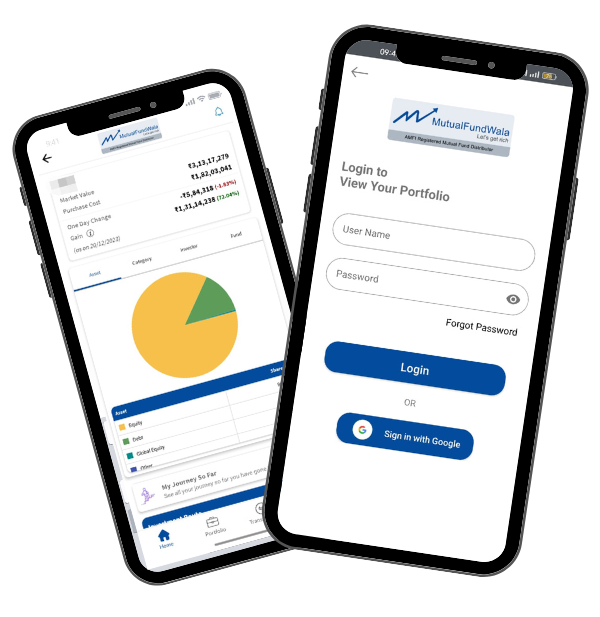Investing in mutual funds is widely considered a smart and efficient way to grow wealth over time, thanks to the professional management and diversification they offer.
However, like any investment, mutual funds are not without risks, and understanding these risks is crucial to making informed decisions that align with your financial goals.
In this guide, we’ll take a closer look at the common risks associated with mutual funds, and more importantly, we’ll discuss actionable strategies you can use to reduce their impact.
Whether you’re a cautious investor or willing to take on more risk for higher returns, managing these risks effectively is key to achieving long-term financial success. Ready to learn how to protect and grow your investments? Let’s dive in!
What is Risk in Mutual Funds?
Risk in mutual funds refers to the potential loss or volatility that an investor may face when investing. It is the uncertainty about the returns and the chance that the investment could lose value over time.
While mutual funds are diversified to some extent, making them less risky than investing in individual stocks, they are still subject to various factors that can influence their performance.
Investors should be aware of the risk-reward relationship—higher risk can potentially offer higher returns, while lower-risk investments might provide more stability but lower returns. However, higher risk does not necessarily mean higher returns.
Let’s dive deeper into the various types of risks that can impact your mutual fund investments.
Types of Risks in Mutual Fund Investments
Market Risk (Systematic Risk)
Market risk, often referred to as systematic risk, is the risk of losing money due to overall market performance. When the stock market or bond market declines, it impacts all mutual funds, no matter how well diversified they are. This is a risk you cannot avoid, as it affects the entire financial market.
Example: If you have invested in an equity mutual fund, a sudden downturn in the stock market due to economic instability can cause the value of your investment to drop, even though the fund itself is managed by professionals.
Mitigation Strategy: One way to manage market risk is through asset allocation. By spreading your investments across different asset classes—such as stocks, bonds, and cash—you can balance the potential downside risk. Investing in low-risk mutual funds like debt or money market funds can offer more stability if you are risk-averse.
Credit Risk
Credit risk is specific to debt mutual funds, where the risk comes from the possibility of the issuer of the bond defaulting on their payments. If the issuer is unable to meet interest or principal repayments, it can negatively impact the performance of your mutual fund.
Example: If you invest in a debt fund that holds bonds issued by companies with lower credit ratings, there is a higher chance of default.
Mitigation Strategy: Opt for debt funds that invest in bonds with higher credit ratings. Government securities, or G-Secs, for example, are considered one of the safest forms of debt investment because the likelihood of default is extremely low.
Interest Rate Risk
Interest rate risk refers to the impact of fluctuating interest rates on debt mutual funds. When interest rates rise, the value of existing bonds falls, which affects the net asset value (NAV) of debt mutual funds.
Example: Suppose you hold a long-duration debt fund, and the central bank decides to increase interest rates. As a result, the value of the bonds in your fund drops, causing the NAV to decrease.
Mitigation Strategy: To minimize interest rate risk, consider investing in short-duration debt funds or funds with floating interest rates. These funds are less affected by changes in interest rates because they adjust more quickly to market conditions.
Inflation Risk
Inflation risk, or purchasing power risk, occurs when the returns on your investment do not keep pace with inflation, eroding the real value of your money. This risk is particularly concerning for conservative investors who opt for low-risk mutual funds like bond or money market funds.
Example: If inflation is at 5% and your low-risk mutual fund is only earning 3% annually, the real return on your investment is negative, reducing your purchasing power over time.
Mitigation Strategy: To manage inflation risk, diversify your portfolio to include very high-risk mutual funds like equity funds, which have the potential for higher returns that can outpace inflation. Equity mutual funds historically perform well in the long term and can offer protection against inflation.
Liquidity Risk
Liquidity risk is the risk that you may not be able to sell your mutual fund units quickly enough without affecting their price. This is especially relevant for funds that invest in less liquid assets like real estate or corporate bonds.
Example: You might need to redeem your investment during a market downturn, but since your mutual fund holds illiquid assets, it may be difficult to sell them without incurring a loss.
Mitigation Strategy: Stick to mutual funds that invest in highly liquid assets. Equity funds that focus on large-cap stocks and money market funds are usually more liquid. Also, have an emergency fund set aside so you don’t have to redeem your mutual fund investment prematurely.
Concentration Risk
Concentration risk arises when a mutual fund’s portfolio is heavily weighted toward a specific sector, company, or geographic region. If that particular area underperforms, the overall return of the mutual fund is negatively impacted.
Example: A sectoral fund that focuses on technology companies may perform poorly if the technology sector experiences a downturn.
Mitigation Strategy: Diversify your investments across various sectors and regions. Balanced funds or multi-cap equity funds provide broad exposure to different sectors, which can help minimize concentration risk.
Managerial risk
Managerial risk refers to the risk that the fund manager’s decisions may negatively affect the fund’s performance. Mutual funds are actively managed, which means the success of the fund relies on the skills and experience of the fund manager.
Example: A poor decision by a fund manager to overweight a particular stock or sector could lead to underperformance.
Mitigation Strategy: Research the fund manager’s track record before investing. Opt for funds managed by seasoned professionals with a history of consistent performance. Additionally, consider low-risk mutual funds like index funds or exchange-traded funds (ETFs) that follow a passive investment strategy.
Reinvestment Risk
Reinvestment risk occurs when the interest or dividends earned from your mutual fund are reinvested at a lower interest rate or return. This is more common with debt funds.
Example: If your debt fund pays regular dividends, and interest rates have dropped, the reinvested dividends may earn a lower return, reducing your overall yield.
Mitigation Strategy: One way to manage reinvestment risk is by choosing growth options in debt funds rather than dividend options. This ensures that your returns are compounded rather than distributed and reinvested at potentially lower rates.
Risk Management in Mutual Fund Investments
Now that we’ve covered the types of risks, let’s discuss how to approach risk management in mutual fund investments.
Diversification: Diversification is a key strategy in managing investment risk. By spreading your investments across different types of mutual funds, asset classes (such as equities, bonds, or commodities), and sectors, you reduce your exposure to any single market or economic event. This way, when one area of your portfolio underperforms, another may perform better, helping to balance out the overall impact.
Regular Monitoring: Keep an eye on your investments. Periodically review the performance of your mutual fund portfolio and rebalance it based on your financial goals and risk tolerance.
Risk Tolerance Assessment: Assess your risk tolerance before investing. Understanding how much risk you are comfortable with will guide your investment choices. For example, if you prefer stability, focus on low-risk mutual funds like debt or balanced funds.
Long-Term Perspective: Investing in mutual funds is generally more rewarding in the long term. If you invest with a short-term perspective, you may react to market fluctuations and make decisions based on emotions, which increases risk.
Avoid Lump-Sum Investments: Instead of investing all your money at once through a lump-sum investment, it’s wiser to spread your investments over time. You can also use Systematic Investment Plan (SIP) for reducing your risk.
Conclusion
Understanding risk in mutual funds is the first step toward making informed investment decisions. While no investment is entirely risk-free, learning how to manage and mitigate these risks can help you achieve your financial goals without unnecessary stress.
Whether you’re investing in low-risk mutual funds for safety or very high-risk mutual funds for growth, proper risk management ensures that your portfolio is aligned with your risk tolerance and financial objectives.
If you want to dive deeper into how mutual funds can work for you, or if you need help analyzing your portfolio, visit Mutualfundwala. Their experts can guide you through your investment journey and offer personalized advice for smart, risk-managed investing.











